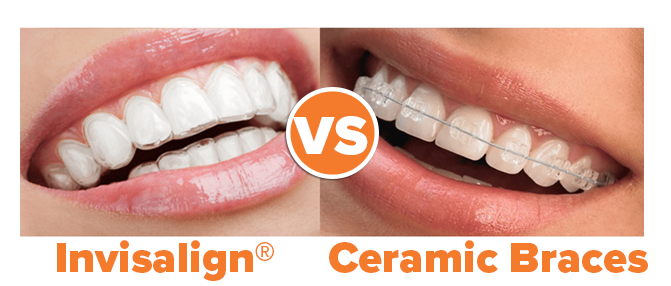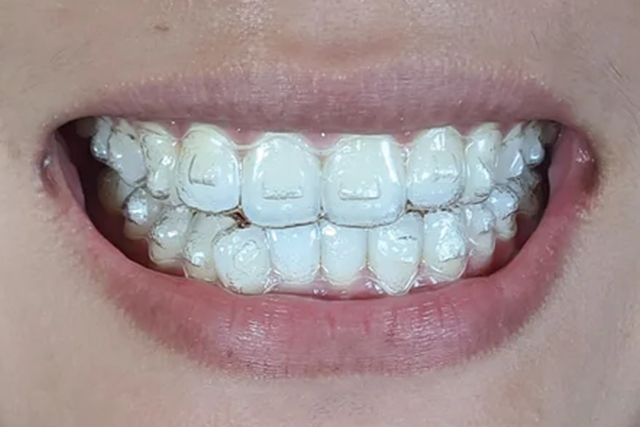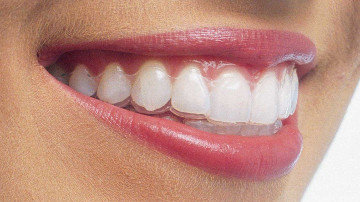Leading Factors to Select Invisalign Over Other Orthodontic Treatments
Leading Factors to Select Invisalign Over Other Orthodontic Treatments
Blog Article
Invisalign vs. Typical Dental braces: Which Alternative Is Right for You?
When considering orthodontic treatment, the choice in between Invisalign and traditional dental braces offers numerous vital variables that merit cautious analysis. Invisalign supplies a very discreet alternative with detachable aligners, while conventional braces supply a more noticeable yet effective remedy for severe misalignment.
Overview of Treatment Alternatives

In contrast, traditional dental braces are composed of steel brackets and cables that are adhered to the teeth. This approach uses continual pressure with time to achieve placement. While effective for complicated orthodontic concerns, conventional dental braces call for regular brows through for modifications and can posture challenges in preserving dental health due to the trouble of cleaning up about wires and brackets.
Both choices have their qualities, and the selection frequently rests on details oral problems, lifestyle preferences, and client conformity. Inevitably, seeking advice from an orthodontic professional is essential for figuring out the most suitable treatment plan customized to individual requirements. Recognizing the nuances of each alternative can considerably affect the overall success of orthodontic treatment.
Aesthetic Factors To Consider
A considerable element affecting the option in between Invisalign and standard braces is the aesthetic appeal each treatment supplies. Invisalign aligners are crafted from clear plastic, making them virtually unseen when used. This very discreet look is especially attracting teenagers and adults who may really feel awkward regarding their orthodontic treatment. The ability to keep a natural smile throughout the alignment process can significantly boost the individual's confidence in expert and social settings.
In comparison, standard braces contain metal braces and wires, which can be extra obvious. While advancements in orthodontic innovation have led to the advancement of smaller brackets and tinted elastics, typical dental braces still maintain a more conspicuous profile. For some people, the visibility of dental braces may prevent them from looking for essential treatment.
Inevitably, the option between Invisalign and conventional dental braces might rest on personal choices relating to aesthetic appeals. Patients that focus on discernment frequently favor Invisalign, while those that are much less worried concerning visibility might choose standard braces. Recognizing the aesthetic ramifications of each alternative is critical for making an educated decision that lines up with one's way of living and preferences.
Comfort and Convenience

In terms of ease, Invisalign aligners are removable, allowing people to appreciate their favored foods without constraint and keep optimal dental health. Brushing and flossing are websites simplified, as the aligners can be gotten during these regimens, whereas traditional dental braces call for careful navigating around cables and braces.
Additionally, Invisalign's progressive system enables for fewer orthodontic sees. Individuals normally get multiple collections of aligners at the same time, which can improve the treatment procedure and decrease time spent in the orthodontist's chair. On the other hand, traditional braces necessitate normal changes, making them much less practical for those with hectic schedules. Invisalign. On the whole, the convenience and ease of Invisalign make it an attractive option for lots of individuals seeking orthodontic treatment.
Therapy Period and Performance
While both Invisalign and standard braces work in correcting dental misalignments, the period of therapy can vary substantially between both options. Commonly, Invisalign treatment can take anywhere from 12 to 18 months, depending upon the intricacy of the case. The clear aligners function by slowly moving teeth right into their desired placements, and normal follow-ups with an orthodontist help make sure progress continues to be on course.
On the other hand, traditional braces commonly need a longer commitment, typically ranging from 18 months to three years. This is because of their fixed nature and the use of cables and braces, which can be much more effective for severe misalignments and complex situations (Invisalign). The treatment effectiveness of typical dental braces is well-documented, as they enable for accurate modifications and greater control over tooth movement
Ultimately, the choice in between Invisalign and typical braces may hinge on both the expected treatment period and the specific oral issues handy. Consulting with an orthodontist is critical, as they can offer tailored recommendations based on private requirements, guaranteeing the picked approach aligns with desired results and durations.
Expense Contrast and Insurance Choices
Price plays a considerable function in the decision-making process for individuals taking into consideration orthodontic treatment, whether going with Invisalign or standard braces. Typically, the expense of Invisalign ranges from $3,000 to $8,000, while conventional dental braces normally cost in between $2,000 and $6,000. Variables affecting these prices include the intricacy of the situation, the duration of treatment, and geographical location.
Insurance policy protection can substantially affect out-of-pocket expenses. Many oral insurance policy plans offer partial protection for orthodontic therapies, however the specifics can vary extensively. It is crucial for patients to assess their insurance coverage to determine the level of coverage for either choice. Usually, conventional dental braces might be a lot more frequently covered by insurance coverage strategies compared to Invisalign, which some insurance companies classify as a cosmetic treatment.
Additionally, numerous orthodontic methods use versatile layaway plan, look what i found making both therapy options much more obtainable. Individuals ought to ask about potential financing options and discount rates for ahead of time settlements. Assessing the overall cost, including insurance advantages and settlement strategies, is essential for making an informed image source decision that lines up with both visual preferences and budget plan considerations.

Verdict
In recap, the option in between Invisalign and standard dental braces pivots on several elements, including aesthetic preferences, convenience, treatment duration, and cost. Invisalign offers a very discreet, detachable alternative that assists in dental hygiene and dietary versatility, while typical dental braces may be better for complex dental concerns and frequently come at a reduced price point. Ultimately, assessment with an orthodontist is important to examine specific circumstances and establish the most proper therapy option for achieving optimum dental alignment.
When taking into consideration orthodontic therapy, the selection in between Invisalign and conventional braces provides numerous crucial elements that warrant cautious analysis.Contrasting Invisalign and typical braces discloses unique therapy choices for orthodontic correction.While both Invisalign and standard braces are reliable in remedying dental misalignments, the period of treatment can differ considerably in between the two alternatives.Cost plays a substantial function in the decision-making procedure for individuals thinking about orthodontic therapy, whether opting for Invisalign or typical braces.In summary, the selection between Invisalign and typical braces hinges on numerous factors, including visual choices, comfort, treatment period, and cost.
Report this page